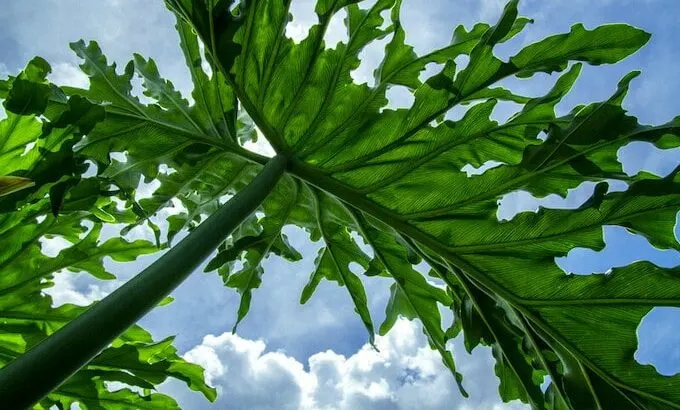This guide is about Philodendron selloum care. You came here to learn more about this houseplant and how to make it thrive. In this article, I will cover my best-growing tips, from watering to soil to propagation.
Rarely a houseplant has fascinated me as much as the Philodendron selloum. There is a prehistoric look to this plant that is striking. Its leaves get humongous. I love to look at it, and I hope one day mine will fill up my whole apartment.
How to Care for the Stunning Philodendron selloum
Philodendron selloum thrives best in 100% peat-based soil that is alkaline. Its roots need a well-draining potting mix. Provide this Philodendron with bright, indirect sunlight. As a general rule of thumb, water once weekly, and keep the soil slightly moist. Temperatures should be 60-75 degrees Fahrenheit (16-24 degrees Celsius). A humidity of 70-90% is ideal. Fertilize once a month with a liquid fertilizer at half-strength in spring and summer.
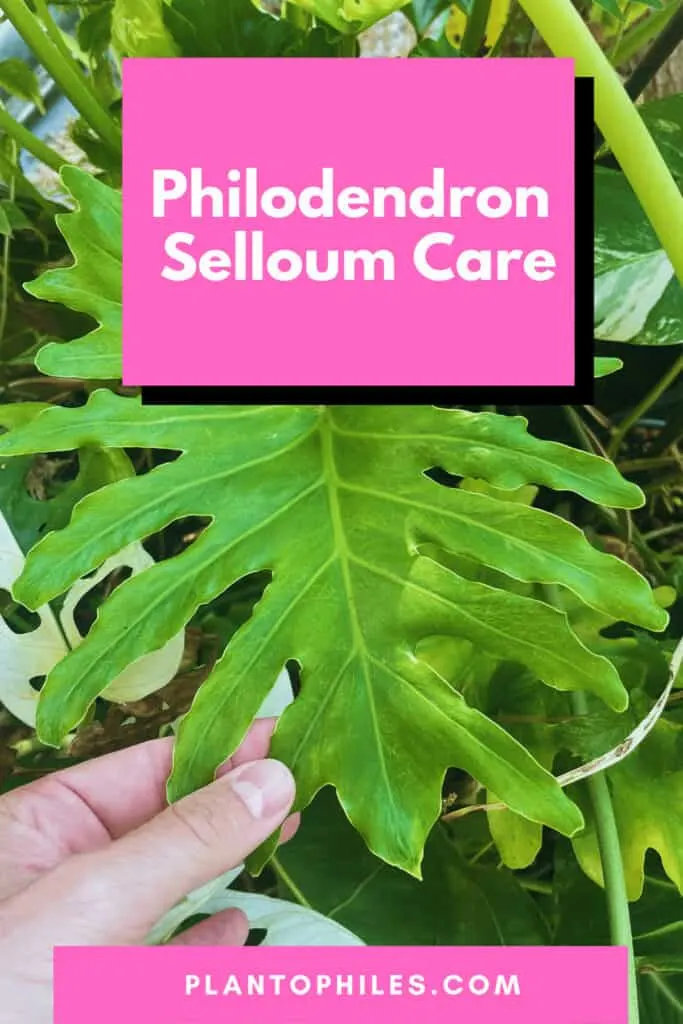
Table of Contents
Takeaways
| Species | Philodendron selloum |
| Synonyms | Tree Philodendron, Cut-Leaf Philodendron, Lace Tree Philodendron, Lacy leaf Philodendron, Split-leaf Philodendron, Horsehead Philodendron, Cut-Leaf Philodendron, Thaumatophyllum bipinnatifidum |
| Family | Araceae |
| Genus | Philodendron |
| Growth | Upright, spreading |
| Height | 16 feet |
| Width | 8 feet |
| Soil | Well-draining soil mix |
| Watering | Every 7-14 days |
| Light | Bright indirect |
| Temperature | 65.0 - 85.0 Fahrenheit; 18.3 - 29.4 Celsius |
| Humidity | 50.0 - 70.0 |
| Fertilizer | Once a month in spring and summer |
| Propagation | Stem cuttings or air layering |
| Toxicity | Toxic to humans, cats and dogs |
What is a Philodendron selloum?
Philodendron selloum is an Aroid belonging to the Araceae family of plants. Aroids are flowering plants from the Araceae family that have air roots and grow on other trees and objects. It is no longer part of the Philodendron genus with more than 482 accepted species, according to Boyce&Croat.
Philodendron selloum has recently been reclassified to Thaumatophyllum and is now called Thaumatophyllum bipinnatifidum.
This Philodendron is also called Tree Philodendron. It grows a thick woody stem and develops large lobed leaves. The leaves are dark green, lobed, and thin. The growth form is upright and bushy.
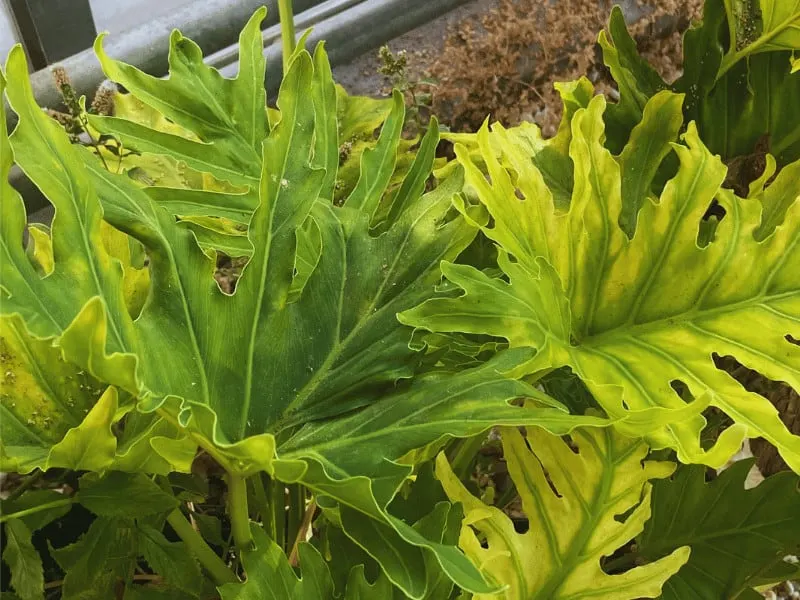
Philodendron selloum Care Guide
A Philodendron selloum, given the right amount of light, water, humidity, and fertilizer, will grow to be an enduring family member. These plants have a life span extending over 15 years, taking a while to mature.
Without the necessary care, these plants will not produce brilliant white flowers, and you won’t see the mature form. Let’s look at how I care for the Tree Philodendron.
Soil
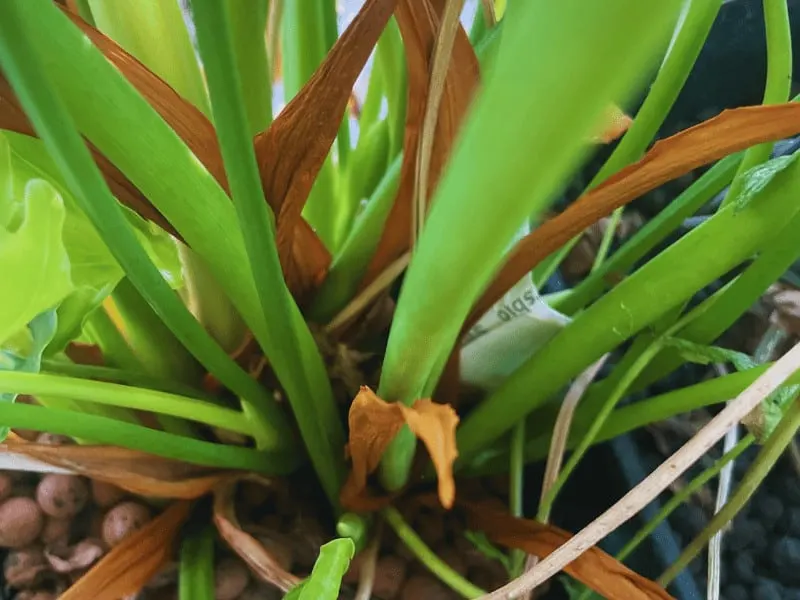
The Horsehead Philodendron thrives in rich, moist, and alkaline soil. Consider using soil comprised entirely of Sphagnum peat moss. Moist but not soggy soil is ideal.
An alternative potting mix is an airy Aroid mix consisting of peat, perlite, orchid bark, charcoal, and some potting soil.
A well-draining potting soil that is airy is essential. The roots need oxygen flow to thrive. In soggy soil, these plants will develop root rot and die.
I made a mistake at the beginning of just using regular potting soil for my Philodendron plants. This does not work. Watering becomes impossible, and the potting mix will stay soggy for days.
I grow my Philodendron selloum 100% soil-free in a hydroponic setup using leca.
Light

Provide your Cut-Leaf Philodendron with bright indirect sunlight.
Although they can live in deep shade or places with lower light, you may see signs that they aren’t happy.
An east-, west- or north-facing window is best as these window directions allow for sufficient indirect lighting. Avoid too much bright direct sunlight, which can turn yellow and scorch the leaves.
Watering
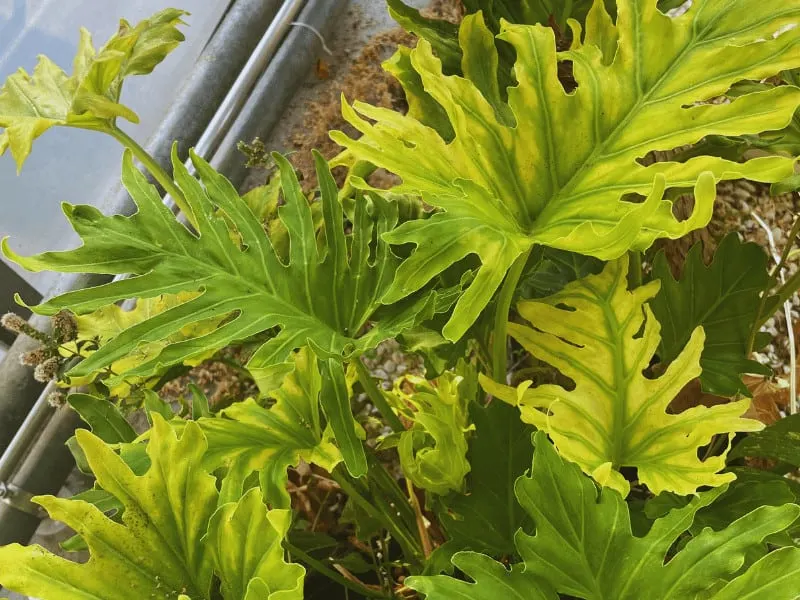
Water Philodendron selloum once a week in spring and summer. Water less in autumn and winter.
This Philodendron prefers to have soil that is moist, not soggy. Allow it to almost dry out between sessions to avoid overwatering. The top two to three inches of soil (5.0-7.5 cm) should remain damp.
Temperature
Philodendron selloum prefers temperatures between 60-75 degrees Fahrenheit (16-24 degrees Celsius). Anything lower than 50 degrees Fahrenheit (10 degrees Celsius) will stop growth for a prolonged time.
You can grow the Tree Philodendron outside in USDA hardiness zones 9b-10. Zone 10 is ideal for this tropical plant.
Humidity
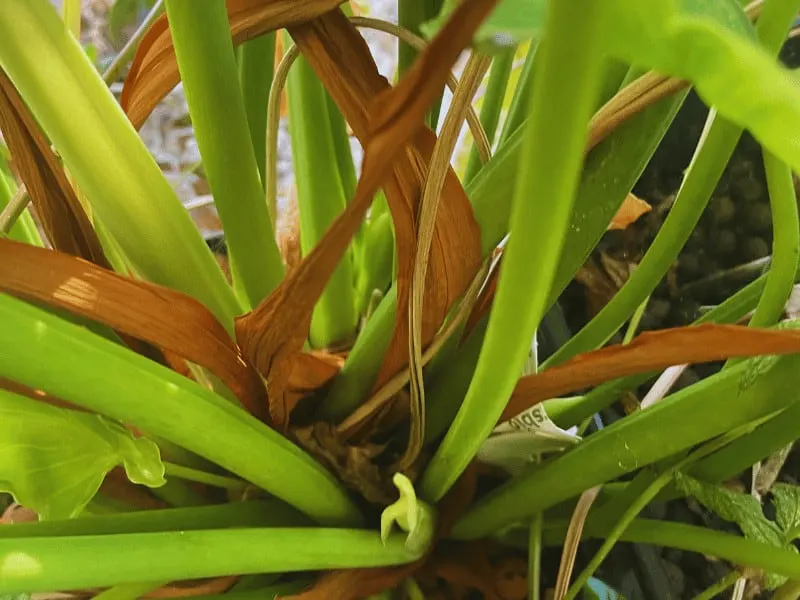
Philodendron selloum grows best in the high humidity of 70% and above. Native to South America, namely Brazil, Argentina, and Bolivia, this plant is used in warm and humid tropical climates.
Too keep humidity high, misting your plants daily is an easy way to ensure they stay happy. You can also place the Philodendron on a pebble tray filled with water. The idea is that the water on the tray will evaporate and increase the humidity.
But hands down, the best solution from my personal experience is to use a humidifier indoors or build some terrarium or grow tent around your Philodendron selloum if possible.
Since they get huge, the humidifier is probably the best solution. Everything else is a lot of work with little increased humidity.
Fertilizer
Fertilize monthly with a well-balanced water-soluble fertilizer in spring and summer. If you add a water-soluble fertilizer, use it at half the recommended dose or strength.
In autumn and winter, you can reduce to fertilizing every two months. During this season plants are mostly dormant.
Growth
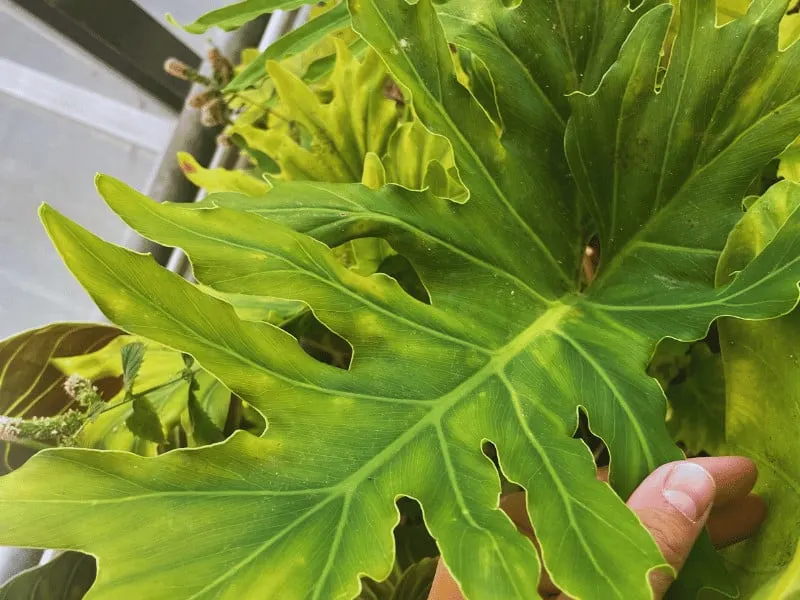
Philodendron selloum is a fast-growing climber. It grows upright and bushy and will grow up to 16 feet (5m), according to Flora&Fauna Web.
Liked for their appearance, these plants take up a lot of room. As the name suggests, these individuals act like a tree, growing a trunk once it matures.
Philodendron selloum leaves measure 24-35 inches (60 to 90 cm) in length with a total surface area of about 60 inches (152-centimeter) width.
Potting
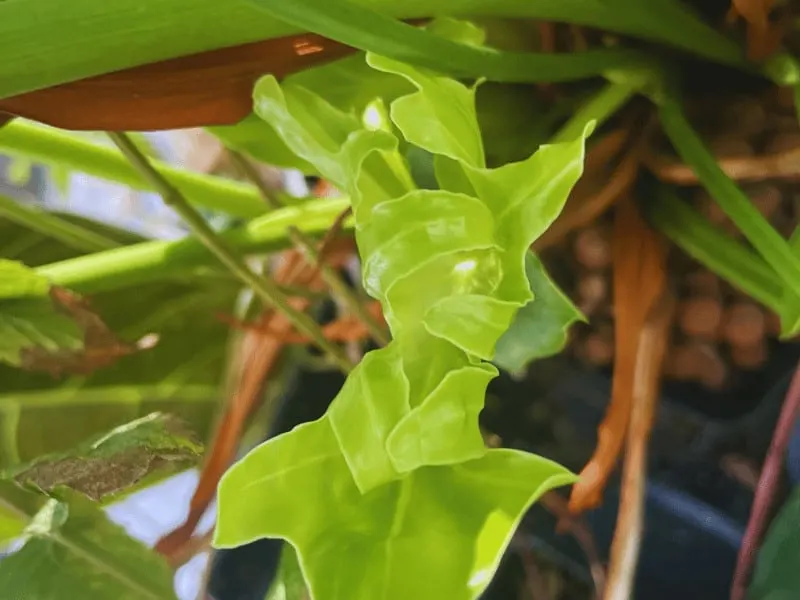
Repot every year as it grows quickly. The Tree Philodendron is also capable of growing aerial roots. If you see this, take those roots and gently tuck them into the pot.
Philodendron selloum Toxicity
Philodendron selloum is toxic when eaten in larger quantities, according to ASCPA. It contains water-insoluble calcium oxalate chrystals and is toxic to cats, dogs, and humans.
Ingested, it causes a lot of pain in the mouth. It can also cause pain in the skin, which is not that bad.
Do you need to prune Philodendron selloum?
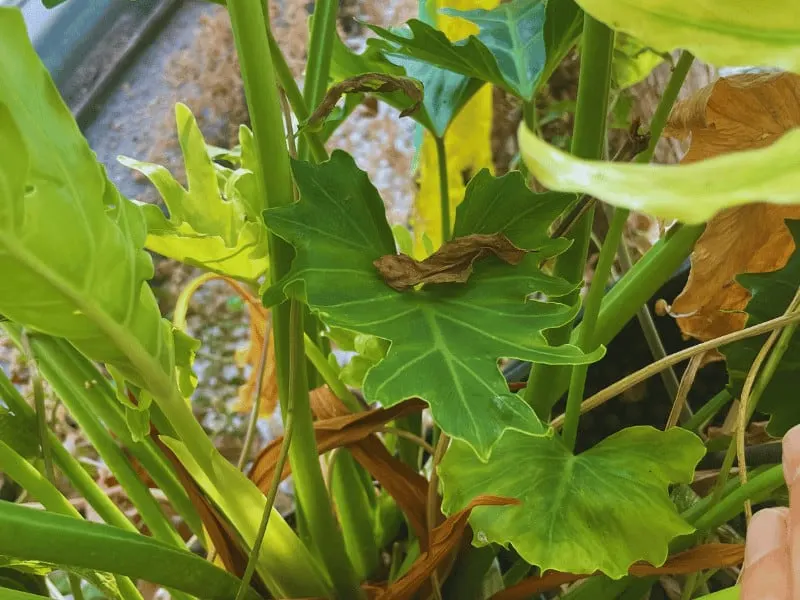
Pruning your Philodendron can be necessary for several reasons. The most common is that it outgrows the current living space. Aerial roots become unruly, and the plant gets too bushy and wide. Routine cutting back can also prevent your Tree Philodendron from getting sick. Pruning this plant is best done in the spring or fall months.
Are you worried about cutting away too much? Don’t worry. This plant is hardy, handling the occasional pruning well.
When mine gets unruly, I just cut back some of the leaves. I also divert the plant more and remove whole sections so it does not become too bushy. My space in the hydroponic ebb&flow system is limited.
How to prune a Tree Philodendron?
Step 1: Before you take out your trimmers, water your Philodendron. This will reduce the shock it may experience due to reduced moisture.
Step 2: Using a sharp knife, you’ll want to attack the tips of the leaves first. Slowly trim the leaf tips back to the height that you want.
Step 3: Attack the branches once the leaves reach your desired height. Trimming back the branches will ultimately affect the size of the plant so that new shoots can fill in empty spaces.
Step 4: Water your plant again. Thoroughly saturate it until the top six inches of soil is damp.
Step 5: Place your newly trimmed plant in a spot with partial sunlight.
A useful tip for pruning Philodendrons is to place them three feet apart.
This ensures they won’t become overcrowded, thus decreasing the time between pruning sessions.
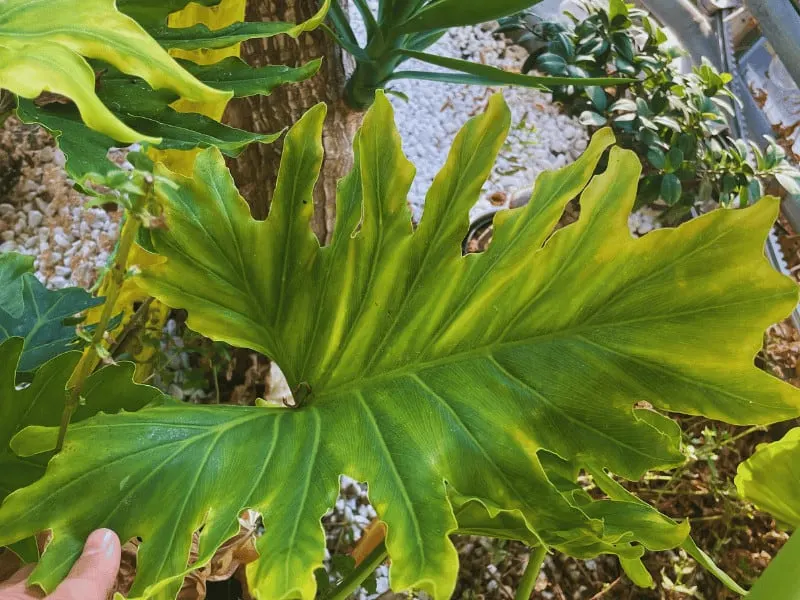
How to Propagate Philodendron selloum – The Right Way
The easiest propagation method for a Philodendron selloum is stem cuttings. Being extremely resilient, the Tree Philodendron is a great candidate for propagation.
Step 1: Begin by prepping a new pot with at least two inches of peat moss and sand. Make sure that the organic matter is mixed evenly.
Step 2: Water your newly crafted pot until water flows out of the bottom, ensuring the drainage holes work correctly.
Step 3: Scan through your Philodendron individuals and find a stem with at least two nodes.
Step 4: Cut the stem off of the Tree Philodendron, including both the stem and the two nodes.
Step 5: Place the propagated stem into the new pot. The bottom node should be pushed underneath the soil’s surface.
Step 6: Once successfully planted, water this newly added cutting.
Step 7: Create a warm, moist environment for your stem to grow by covering it in a clear plastic bag. The plastic should cover the stem after the soil has been completely moistened.
Step 8: Set your new plant in an area of the house where it can be exposed to indirect sunlight.
Step 9: Check for new growth weekly by gently digging around the stem’s base.
Step 10: If you notice the roots growing quicker, transplant it to a new pot with 3 inches of potting mix.
Step 11: Move this individual to a bigger pot when needed.
It will take anywhere from three weeks to a month for you to see the roots fully form. For the best results, you may consider propagating your Philodendron during the spring and summer.
Propagate Philodendron selloum in water
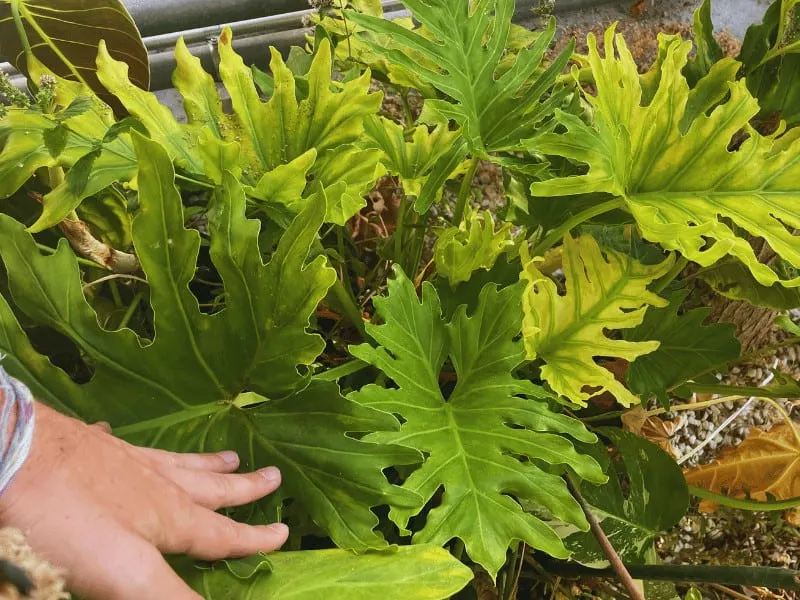
Philodendron Selloum can be propagated directly in water using a stem cutting.
Members of the family Araceae, such as Philodendron, make this alternative method somewhat easy.
These flowering plants all have fleshy aerial roots that quickly absorb water.
- Make a clean cut and remove a six-inch stem.
- This stem should include at least two or three leaf nodes. Carefully continue to pinch off these nodes so that they are exposed.
- You are now ready to take the leafless end of the newly cut stem and suspend it in water.
- Check back frequently, looking for roots to develop. This typically takes about three or four weeks, sometimes longer.
- This newly formed plant is ready to be placed into a pot once the roots are one to two inches long.
Philodendron selloum Problems
Philodendron selloum Yellow Leaves

Cause: Philodendron selloum is known for its distinctively dark and vibrant leaves. If you notice that they start to yellow, this may be due to the plant getting too much water.
Remedy: Modifying your watering schedule can solve yellowing leaves. Try letting your Philodendron dry out a bit before giving them more water. Remember that this plant prefers the soil to be moist, not soggy.
Browning Leaves
Cause: Overwatering can be a serious issue, but so can under-watering.
Philodendrons that show brown colors at the tips of their leaves is often responding to an inadequate amount of water. Unfortunately, this sign can result from too much or too little water.
Remedy: Since it’s difficult to determine if the browning of the leaves is due to too much or too little water, try experimenting with your watering schedule.
Focus on providing more water. If that doesn’t help, stagger the duration between watering. Just be aware that older plants tend to have a slightly brown hue in their leaves.
Dark Patches on the Leaves
Cause: A Philodendron with dark patches on its leaves can show signs of something more serious.
Watch the leaves carefully over time, as this may be an infection known as “bacterial blight.”
This disease attacks the leaves, forcing them to rot and die once fully infect the plant.
Remedy: The unfortunate fact about this disease is that it isn’t curable. Plants with it need to be properly thrown away before infecting other individuals.
The best protection against this disease is to catch it before it starts.
Prevent this from happening by keeping your leaves relatively dry, especially while watering your Philodendron
You have Pest on your Philodendron selloum
The most common pests on a Philodendron selloum are mealybugs, thrips, scale, and fungus gnats. A great preventative measure to avoid getting pests on your plants is thoroughly checking the new plants you bring into your house. Also, spraying your indoor plants with horticultural soap and neem oil every 2-3 weeks helps.
Mealybugs
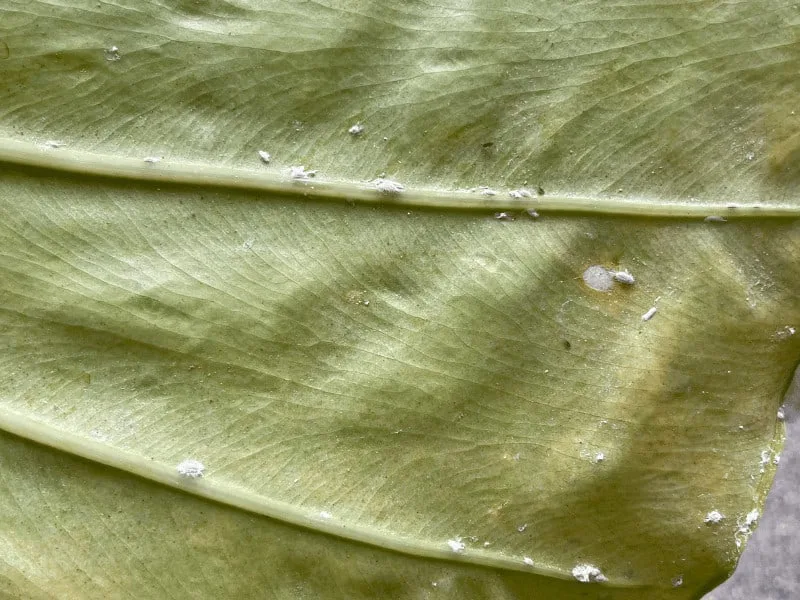
Mealybugs are small white bugs that look like cotton balls. Initially, you will only spot a few and might think it is dust. But these insect colonies grow exponentially over time and become a problem for your Selloum.
Get rid of mealybugs by squishing them from your hand or by using a Q-Tip or cotton swab. You can also use a few drops of rubbing alcohol and dishwater soap. This will dissolve the soft-bodied mealybugs.
Thrips
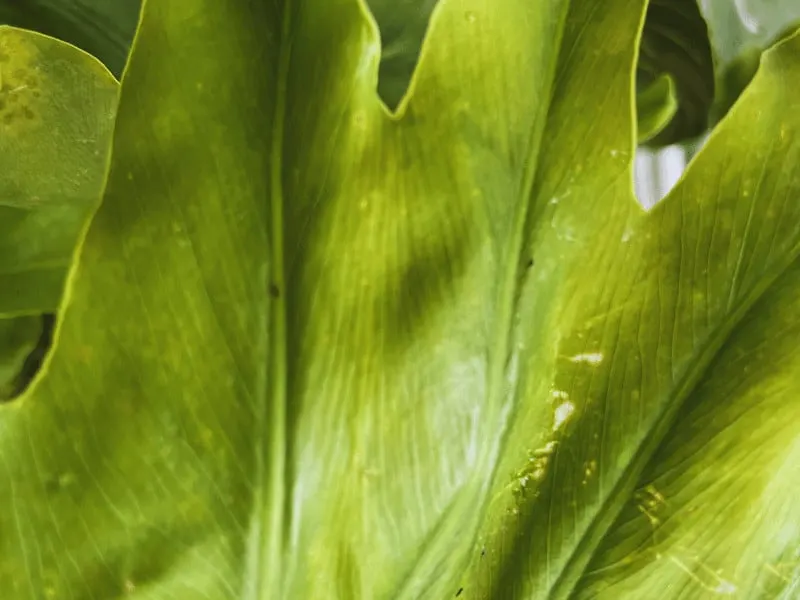
Thrips are small and white in their larvae stage. Once they become adults, they can fly and are brown to black with elongated bodies. They are sap-sucking insects that can also spread diseases.
My experience shows thrips are the worst insects to eliminate and do the most damage. They can completely kill plants and even a whole collection. Use a systemic insecticide or beneficial nematodes (good bugs) to remove thrips.
Scale
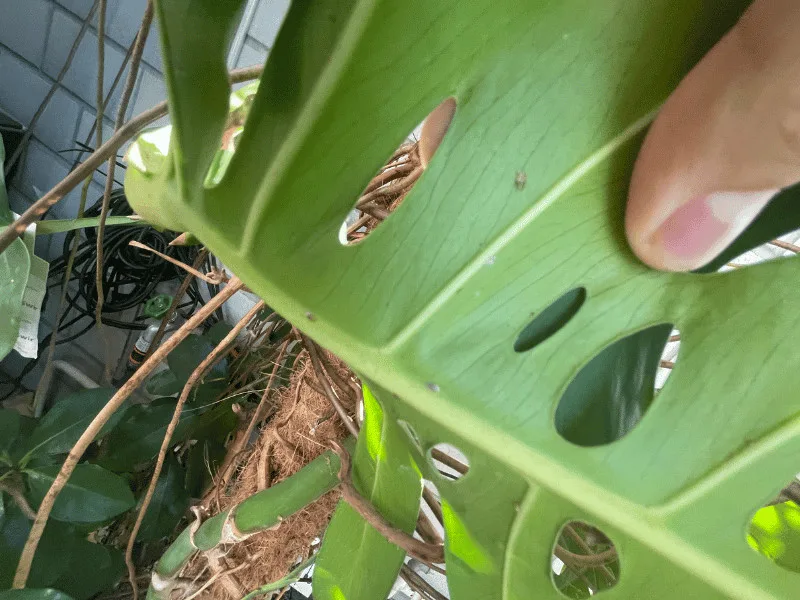
Scale are sap-sucking insects with hard bodies. They mostly stay put on the underside of leaves and the stems and petioles of plants.
They are moving very slowly, if at all, and are easy to pluck off. You can also use a cotton swab or Q-Tip with rubbing alcohol.
Fungus Gnats
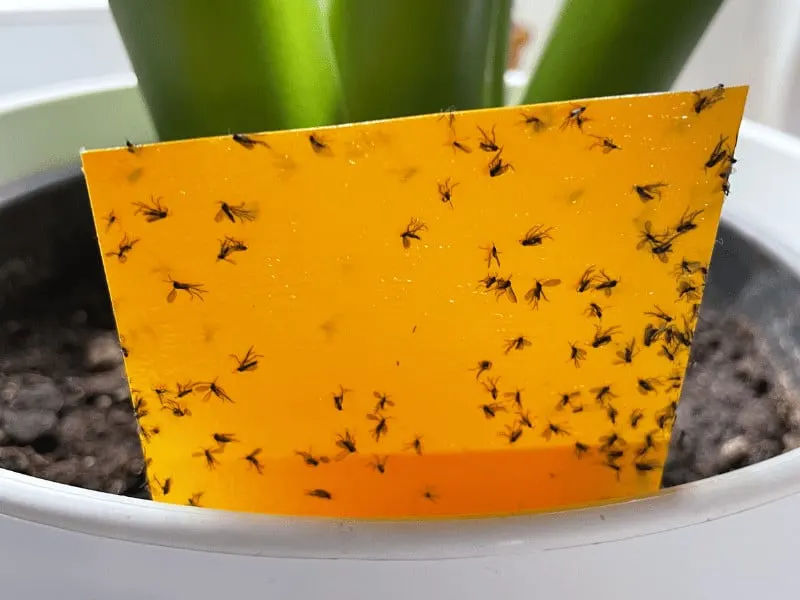
Fungus gnats are pesky little insects that look like small flies or mosquitoes. They are attracted by wet soil. Usually, it is a sign that you are overwatering your plants and that the soil does not dry quickly enough.
To remove fungus gnats, use sticky tape, water less, or let the soil completely dry out if possible. What also helps is to change to an inorganic potting medium such as leca balls or lechuza pon substrate.
FAQ
Why is my Philodendron selloum drooping?
Drooping leaves are usually caused by either too much or too little water. Adjust your watering routine to determine which problem your Philodendron is facing.
Do Philodendrons need sunlight?
These plants do indeed need sunlight to survive. They prefer to be placed in an area with bright, indirect sunlight, even though they can survive with lower light.
Should I repot my Philodendron?
This species of Philodendron is known to grow quite tall and large, hence the name “Tree” Philodendron. As such, they will occasionally need to be repotted before breaking out. Check the spacing between your pot and the plant yearly to ensure they are not too cramped.
The last Tree Philodendron
Philodendron selloum is an archaic-looking Philodendron that gets huge and is easy to care for. As long as you have enough space indoors or outdoors, this makes a fantastic statement plant.

Daniel has been a plant enthusiast for over 20 years. He owns hundreds of houseplants and prepares for the chili growing seasons yearly with great anticipation. His favorite plants are plant species in the Araceae family, such as Monstera, Philodendron, and Anthurium. He also loves gardening and is growing hot peppers, tomatoes, and many more vegetables.

